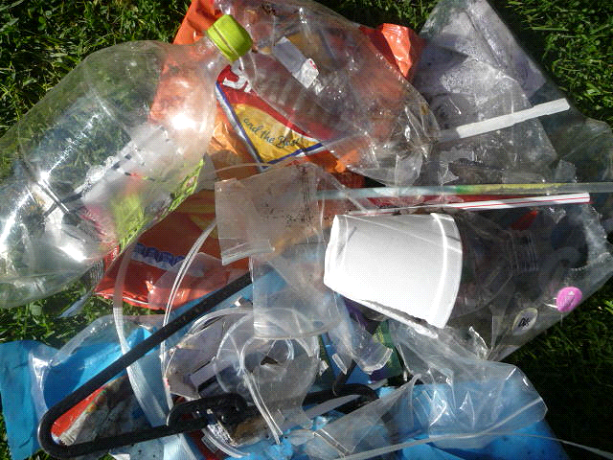Western Europe’s Experience with Refillable Beverage Containers | Reduce, Reuse, Refill!
Posted on October 20, 2014 by DrRossH in Plastic & Wildlife, Plastic Waste NewsWestern Europe’s Experience with Refillable Beverage Containers | Reduce, Reuse, Refill!.
In spite of the high prevalence of refillable beverage containers in many countries, refilling has been slowly declining across Europe. In 1997, 41 percent by volume of the mineral water sold in European Union (EU) countries came in refillable bottles. In 1996, about 39 percent of soft drinks were consumed from refillable bottles. The amount of beer sold in refillable bottles fell from 81 percent in 1979 to about 60 percent in 1997 because the growth in the European beer market has favored one-way containers. Non-carbonated beverages such as fruit juices and flavored milk are packaged mainly in cartons, and only a few refilling systems exist for these types of drinks [AGM, pp. 16-19].
The changes in the beverage and retail industries that caused the decline of refilling in the United States are forcing the decline also in Europe. Coca-Cola, which has more than 50 percent of the European market, had a decentralized bottling and distribution structure until the mid-1980s. Around that time, Coca-Cola’s European subsidiary began transforming itself from a multi-company organization of franchise bottlers and distributors to a single corporation. Coca-Cola’s consolidation led to the centralization of its bottling and canning operations. One of these operations, the Bergues plant in Northern France, cans Coca-Cola products for the entire European market
Besides the retail industry, another adamant opponent of refilling in Europe is the packaging industry. The packaging and the consumer products industries express their opposition to refilling policies through the European Organisation for Packaging and the Environment (EUROPEN). EUROPEN asserts that laws which favor certain types of packaging unnecessarily restrict trade and distort competition.
Further on introducing a Container deposit Scheme (CDS). What we are really talking about for a CDS is getting the bulk (>80%) of the plastic bottles back to do something else with them. Recycling sounds nice, but in reality what is to be done with them and by whom? The bottling companies like Coke don’t want them at all. In Europe where there are refillable laws in place, the bottling industry is lobbying hard to get rid of these. Here in Aust the bottling companies just make new plastic bottles all the time. So if they are not going to take them back then who is going to use all this plastic waste? More than likely no one in Australia and they will be shipped off shore to China or the likes where people working in intolerable conditions will sort them out for them to made in to down cycled products like a tee shirt. If all we did was to introduce a CDS then the bottling companies like Coke get off very lightly. It puts no imposition on them to change their wasteful practices other than to put their price up 10 cents which as explained above will probably have little to no impact on their sales. I can image their executives rubbing their hands in glee if a CDS was the only thing they had to adjust to, saying we are still getting away with polluting the planet with all our bottles and yet we still don’t have any responsibility for it. Plus a plastic drink bottle has a PET body with specific gravity greater than water, a PP lid that floats that is fully separable from the bottle when it is opened and a flimsy label. A bottle is such a simple thing that they have made very had to recycle and a nightmare for litter. The labels come off and floats in water or drifts across the sand. It tangles in recycling machinery and is certainly not biodegradable. They could not have made a more environmentally unfriendly product if they had tried. Simply just irresponsible. It is all about their sales and nothing about looking after the environment of their consumers. If a bottle is littered with the top off and it gets into a water way or ocean, it sinks. There it will stay for a very long time, 100s and 100s of years. It is bad now in places after just about 20 years of plastic bottle production. You can read stories now about divers and swimmers now seeing the bottom of the parts of the oceans covered in bottles. Imagine our ocean bottoms after a 100 years of littering of this item if they are not reigned in. The floating bottle tops are ideal bite size ‘food appearing items’ for marine birds. Birds in many nesting colonies are choking to death with stomachs full of plastic bits including these tops. There is a documentary coming out early next year by Sir David Attenborough to present this problem to the masses. The bottling companies have smart people, surely a top that stays with the bottle like the ring on a can does is not that hard for them to come up with. They just need to be incentivised to do it otherwise other than their own morality (which they have proved is very low for their products), why would they make a change? We can’t design the perfect plastic product, but for a product that has such a high littering factor and is such a big problem for the marine environment, then this product does need special attention in design and in reuse. It is not getting it now. less

 How many people today grab a takeaway coffee cup from the local cafe to drink on the go? We don’t know, but the number must be enormous.. Most every one of the above have a plastic top that will last 100s of years. Some cafes still use plastic cups that last a similar time. Is 10 minutes of coffee worth 100s of years of trash?
These items can be seen littering our gutters and on our streets all over the place. If they were all cardboard, they would still be littered, but they would, at least, be gone in a short time.
They do not need to be made of plastic.
How many people today grab a takeaway coffee cup from the local cafe to drink on the go? We don’t know, but the number must be enormous.. Most every one of the above have a plastic top that will last 100s of years. Some cafes still use plastic cups that last a similar time. Is 10 minutes of coffee worth 100s of years of trash?
These items can be seen littering our gutters and on our streets all over the place. If they were all cardboard, they would still be littered, but they would, at least, be gone in a short time.
They do not need to be made of plastic.
 On the way home from the gym last week, a distance of about 1 km (1/2 mile), I counted the items of plastic litter on the curb as I walked. In that short distance I counted 63 pieces of plastic litter. Plastic drink bottles, bottle tops, candy wrappers, plastic film, polystyrene fragments etc. That seemed to be a lot to me. I guess it is a generational thing. Our parents would have been horrified to see that amount, whereas it seems to go unnoticed by our youth of today. In another 20 years how many pieces will there be on this stretch, -- 200? What will today’s youth think of that new amount then when they are older? Will their children be so readily accepting of a higher amount of litter?
On the way home from the gym last week, a distance of about 1 km (1/2 mile), I counted the items of plastic litter on the curb as I walked. In that short distance I counted 63 pieces of plastic litter. Plastic drink bottles, bottle tops, candy wrappers, plastic film, polystyrene fragments etc. That seemed to be a lot to me. I guess it is a generational thing. Our parents would have been horrified to see that amount, whereas it seems to go unnoticed by our youth of today. In another 20 years how many pieces will there be on this stretch, -- 200? What will today’s youth think of that new amount then when they are older? Will their children be so readily accepting of a higher amount of litter?
Discussion · No Comments
There are no responses to "Western Europe’s Experience with Refillable Beverage Containers | Reduce, Reuse, Refill!". Comments are closed for this post.Oops! Sorry, comments are closed at this time. Please try again later.